Welcome to the wonderful, intricate universe created by Orson Scott Card in his remarkable Ender’s Game series. This military science fiction series features a plethora of captivating stories, dynamic characters, and intricate plotlines that span numerous books and spin-offs.
Whether you’re a new reader or revisiting this magnificent series, determining the correct reading order can greatly enhance your experience. Here, we’ll delve into three reading orders: by publication date, by series, and in chronological order, helping you decide the best way to explore Ender’s universe.
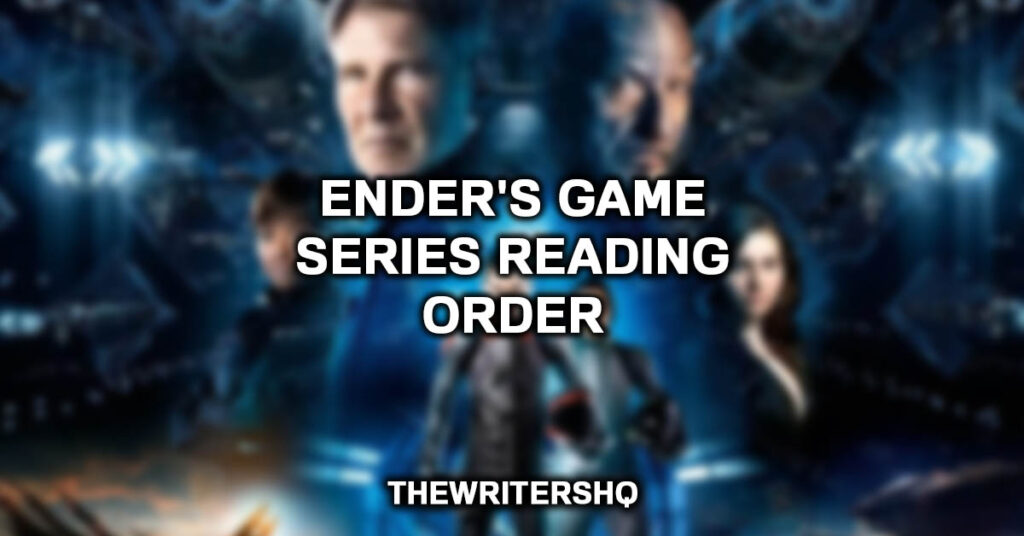
Ender’s Game Books in Order of Publication
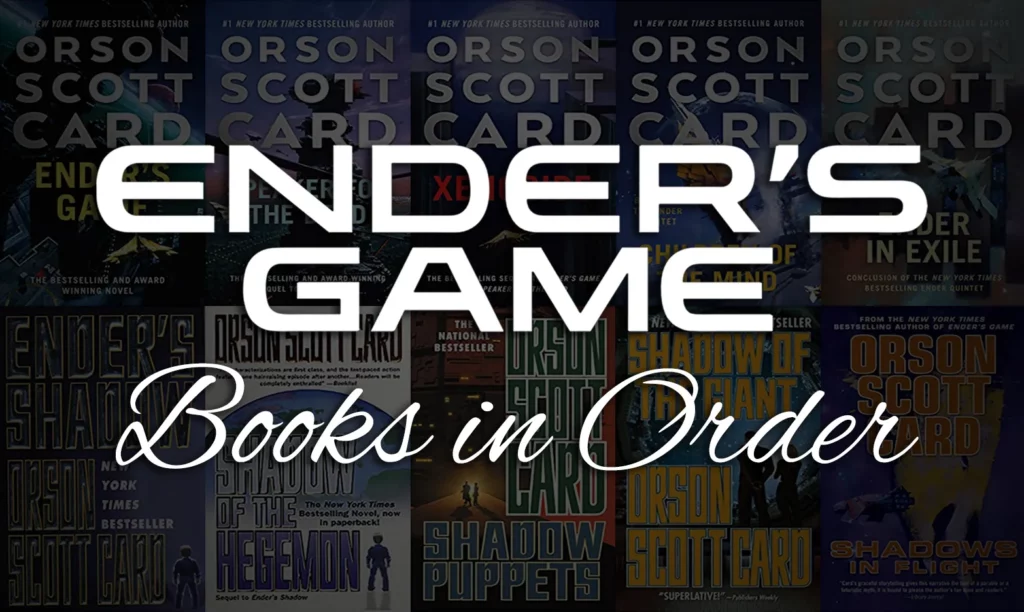
- Ender’s Game (1985)
- Speaker for the Dead (1986)
- Xenocide (1991)
- Children of the Mind (1996)
- Ender’s Shadow (1999)
- Shadow of the Hegemon (2001)
- Shadow Puppets (2002)
- First Meetings (2002)
- Shadow of the Giant (2005)
- A War of Gifts (2007)
- Ender in Exile (2008)
- Shadows in Flight (2012)
- Earth Unaware (2012)
- Earth Afire (2013)
- Earth Awakens (2014)
- Children of the Fleet (2017)
- The Hive (2019)
- The Queens (2021)
- The Last Shadow (2021)
Ender’s Game Books in Order by Series
Ender’s Saga:
- Ender’s Game
- Speaker for the Dead
- Xenocide
- Children of the Mind
- Ender in Exile
Shadow Saga:
- Ender’s Shadow
- Shadow of the Hegemon
- Shadow Puppets
- Shadow of the Giant
- Shadows in Flight
First Formic War:
- Earth Unaware
- Earth Afire
- Earth Awakens
Second Formic War:
- The Hive
- The Queens
Stand-Alone Novels and Novellas:
- A War of Gifts
- First Meetings
- Children of the Fleet
Ender’s Game Books in Chronological Order
- Earth Unaware (First Formic War)
- Earth Afire (First Formic War)
- Earth Awakens (First Formic War)
- The Hive (Second Formic War)
- The Queens (Second Formic War)
- Ender’s Game
- Ender’s Shadow
- A War of Gifts
- Shadow of the Hegemon (Shadow Saga)
- Shadow Puppets (Shadow Saga)
- Shadow of the Giant (Shadow Saga)
- Ender in Exile (Ender’s Saga)
- Shadows in Flight (Shadow Saga)
- Speaker for the Dead (Ender’s Saga)
- Xenocide (Ender’s Saga)
- Children of the Mind (Ender’s Saga)
- First Meetings
- Children of the Fleet
The intricate, overlapping timelines of the Ender’s Game series offer readers multiple ways to explore this rich universe. Whether you choose to read by publication date, by series, or chronologically, you’re sure to find a compelling journey filled with intrigue, drama, and insight into the human condition. Happy reading!
Ender’s Game
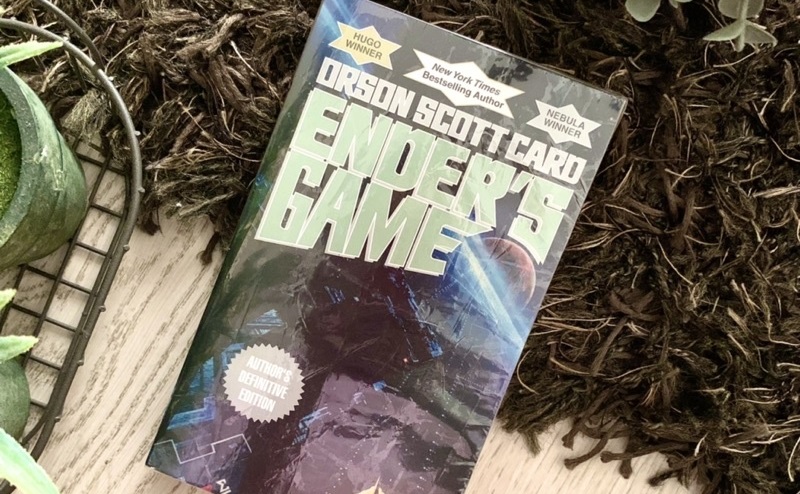
In “Ender’s Game,” we are introduced to a futuristic Earth threatened by a hostile alien race known as the Formics, or the “Buggers.” Fearing another invasion, Earth’s government forms a Battle School in space to train child prodigies as future military leaders.
Andrew “Ender” Wiggin, our protagonist, is a six-year-old boy recognized for his high intellect and strategic skills. He is chosen to attend Battle School, where he excels in all aspects, quickly rising through the ranks. However, the rigorous training, isolation, and manipulation from the adults around him take a toll on his mental state.
After a rapid series of promotions and simulated battles, Ender is deceived into leading a real fleet to attack the Formic homeworld, under the belief that he’s only playing a final test game. The attack is successful, wiping out the Formic race, but leaving Ender devastated when he learns the truth.
The novel concludes with Ender discovering a dormant Formic queen and her eggs, vowing to find a new home for them.
Speaker for the Dead
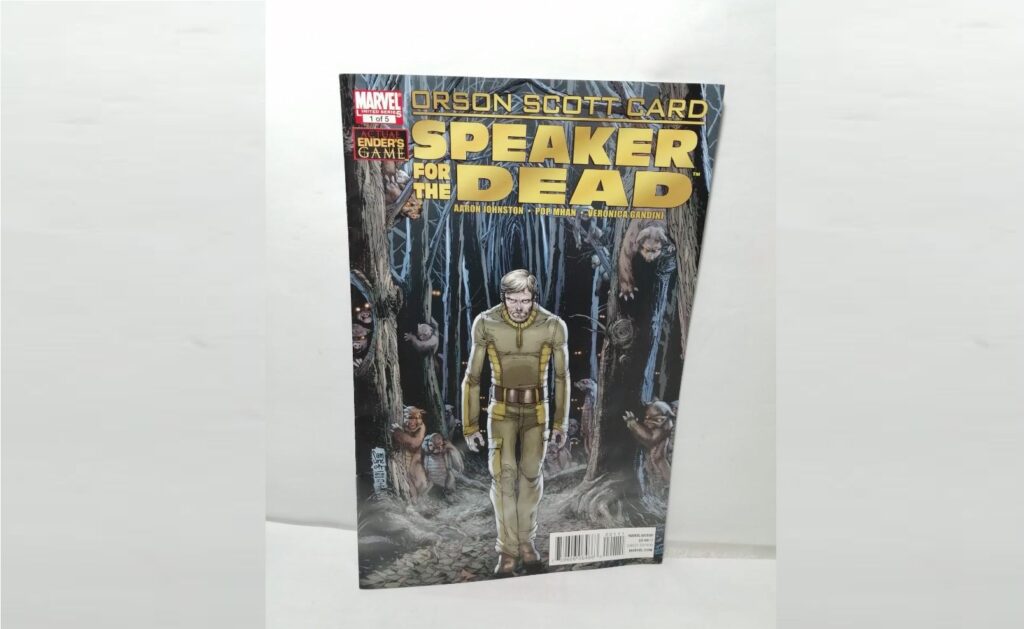
Taking place about 3000 years after “Ender’s Game,” “Speaker for the Dead” sees Ender as a “Speaker for the Dead,” an individual who uncovers and speaks the truth about a person’s life after they have died. Ender, still carrying the dormant Formic queen, travels from world to world, speaking for the dead and seeking a safe place to revive the Formic species.
He arrives on Lusitania, a planet with a human colony co-existing with an indigenous species called Pequeninos. This species is misunderstood and often feared by humans. Ender is asked to speak for a man murdered by Pequeninos and a scientist who died mysteriously.
As Ender investigates these deaths, he uncovers secrets about the relationship between the humans and Pequeninos that challenge both groups’ understandings of each other and themselves.
Xenocide

“Xenocide” continues the story of Lusitania, where a sentient virus known as Descolada threatens human and Pequenino’s lives. The Starways Congress, the governing body of the human colonies, declares the desolate a threat to all human life and decides to obliterate Lusitania.
Meanwhile, Ender’s adopted children, Ela and Quara, along with the brilliant Chinese colonist Qing-jao, seek a way to nullify the virus without killing it, which could cause an ecological catastrophe. Ender communicates with the dormant Formic queen to devise a plan to stop the destruction of Lusitania and save the Pequeninos and the desolate virus.
Children of the Mind
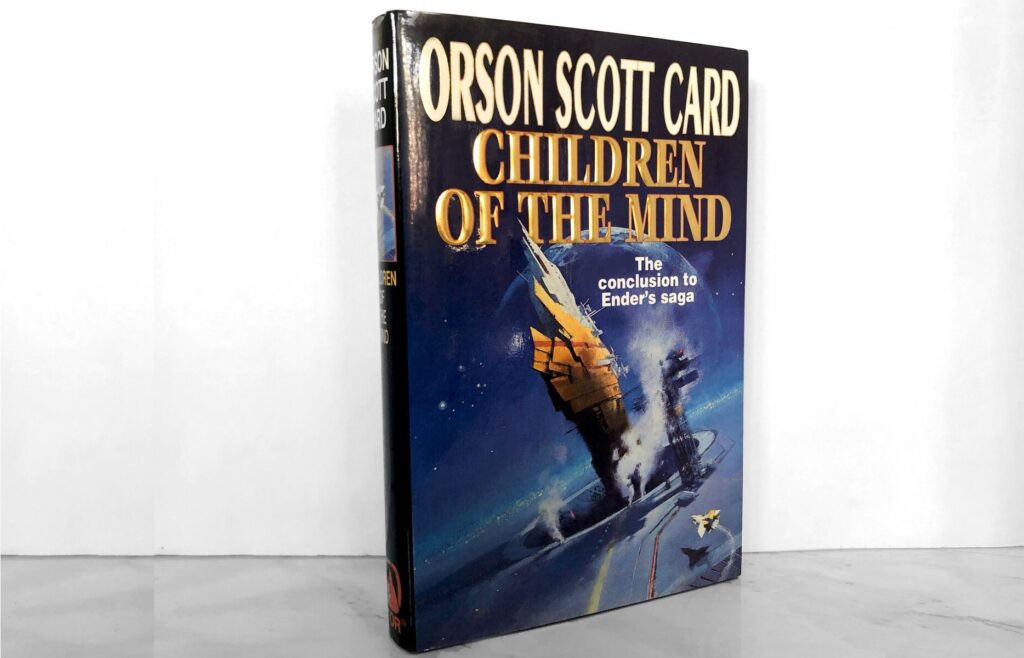
“Children of the Mind” picks up where “Xenocide” left off. Ender’s wife, Novinha, has chosen to place herself into suspended animation due to the grief she feels over her daughter Quara’s quarantining.
Meanwhile, Ender’s body is failing, and his consciousness splits between his original body and that of a younger, healthier clone. His original self stays with Novinha while his clone, with the mind of Ender’s child, alters his ego, and goes on a mission to stop the Lusitania Fleet from destroying the planet.
Quick Fact: The book grapples with identity, consciousness, and morality as the younger Ender and his companions race against time to save Lusitania.
Ender’s Shadow
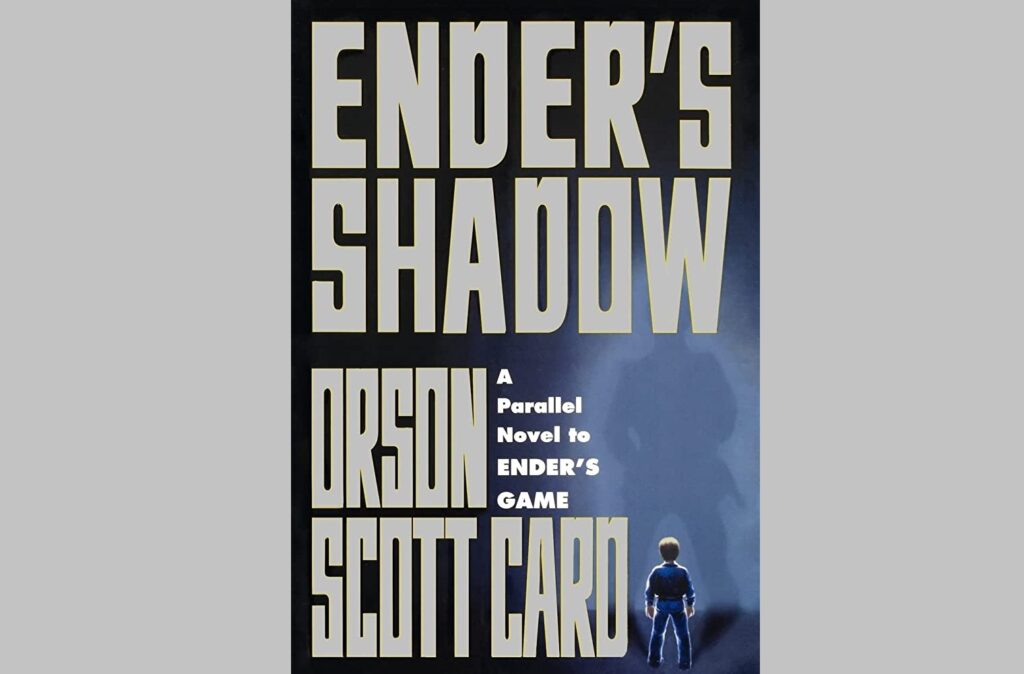
“Ender’s Shadow” is a parallel novel to “Ender’s Game” and follows the story of Bean, a genetically modified child with superior intellect. Bean’s story begins in the harsh streets of Rotterdam, where he uses his exceptional intelligence to survive.
Recognized for his intellect, Bean is sent to Battle School, where his skills surpass even Ender’s, his contemporary and the protagonist of the first book.
The novel offers a different perspective on the events of “Ender’s Game,” providing more depth to the Battle School and its characters, and culminating in the same final battle led by Ender. However, it also delves into Bean’s background, exploring the implications of his genetic modification and setting up storylines for future books in the Shadow Saga.
Shadow of the Hegemon
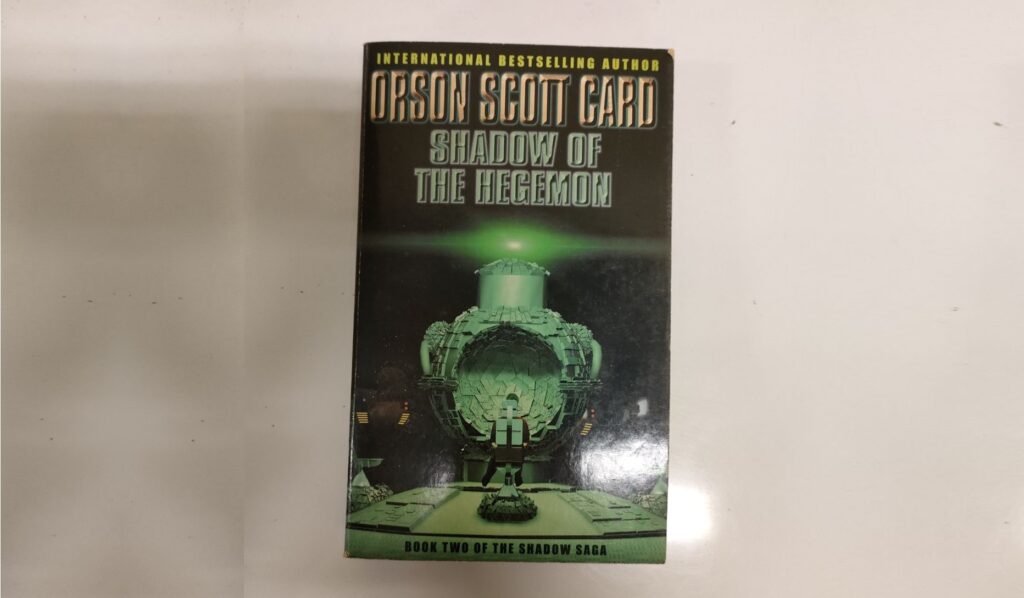
“Shadow of the Hegemon” picks up after “Ender’s Game” and “Ender’s Shadow,” focusing on the power struggles on Earth following the end of the Formic War. Ender has departed Earth, and his brilliant Battle School companions, known as “Ender’s Jeesh,” are kidnapped by Achilles de Flandres, a character introduced in “Ender’s Shadow.”
Bean, Petra, and their allies must navigate geopolitical warfare and personal challenges to rescue their companions and thwart Achilles’ plan to dominate the world. Against the backdrop, the novel explores how different nations try to leverage the power vacuum left by the end of the Formic War.
Shadow Puppets
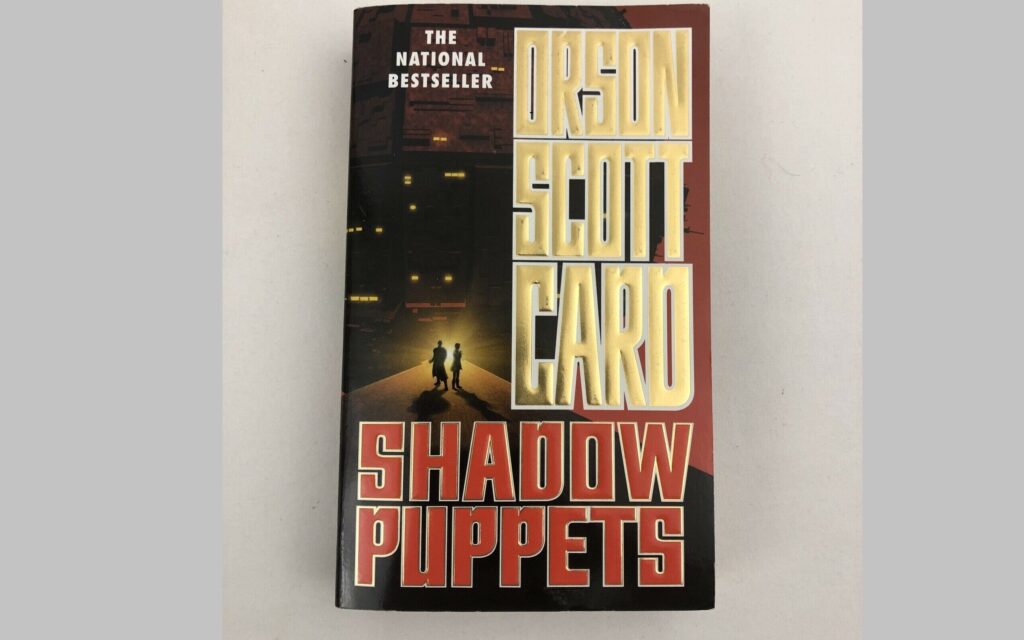
“Shadow Puppets” continues the storyline of “Shadow of the Hegemon.” Achilles is now under the protection of the Chinese government, and war seems imminent. Bean and Petra, now married and wanting to have children, are also trying to avoid the replication of the genetic experiment that made Bean a genius but drastically reduced his lifespan.
Meanwhile, Peter Wiggin, Ender’s older brother and the Hegemon (world leader), works to unify a divided Earth. This book delves deeper into political strategy, ethical dilemmas, and personal conflicts, exploring the shadows of puppeteering world events.
Shadow of the Giant

“Shadow of the Giant” deals with the escalating geopolitical tensions as different nations attempt to assert their dominance on Earth. Bean and Petra’s quest to reclaim their stolen embryos from Achilles continues. Meanwhile, Peter Wiggin strives to create a balance of power among the world’s leaders and unite humanity.
A significant part of the novel focuses on Bean’s struggle with his genetic condition, which causes him to continually grow, threatening to shorten his life. In the end, Bean leaves Earth with his children who share his condition, searching for a cure in the vastness of space.
Through these four novels in the Ender’s Shadow series, we explore parallel narratives, familiar characters from unique perspectives, and the personal and geopolitical struggles in the aftermath of the Formic War.
First Meetings

“First Meetings” is a collection of three short stories that shed light on the backgrounds of key characters and the circumstances that led them to where they are in the main series.
The stories are “The Polish Boy,” focusing on Ender’s father, “Teacher’s Pest,” focusing on Ender’s parents’ courtship, and “Investment Counselor,” detailing Ender’s first encounter with Jane, the artificial intelligence. Additionally, the original novella “Ender’s Game” is included in the collection.
Shadow of the Giant
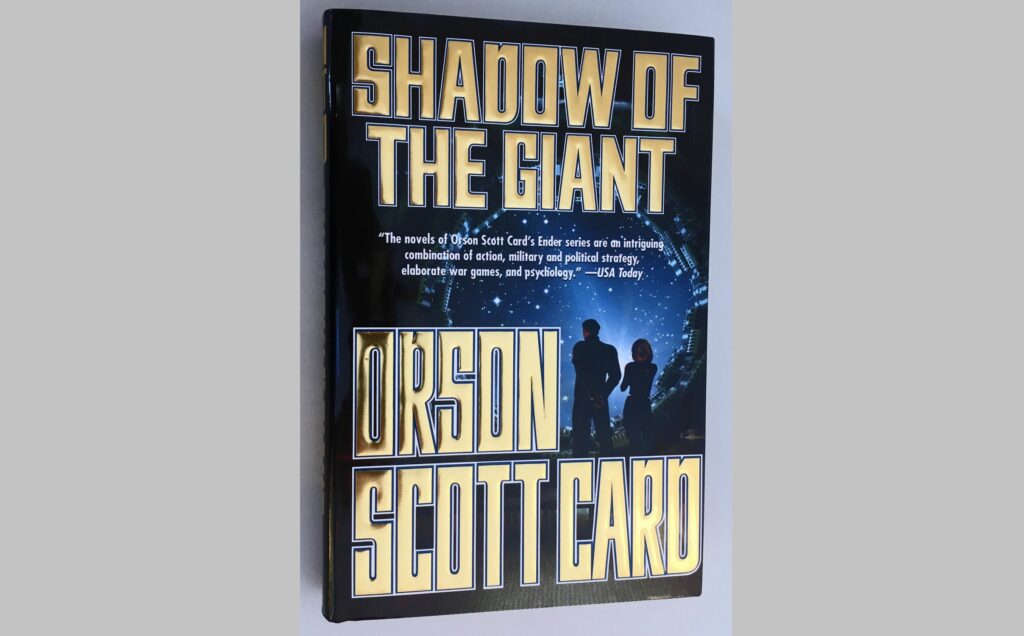
“Shadow of the Giant” continues to follow the story of Bean and Petra as they attempt to recover their stolen embryos and deal with Bean’s genetic condition.
Meanwhile, on Earth, Peter Wiggin, the Hegemon, struggles to keep nations together as they vie for power and influence. By the end of the book, Bean, still struggling with his condition, leaves Earth in search of a cure.
A War of Gifts
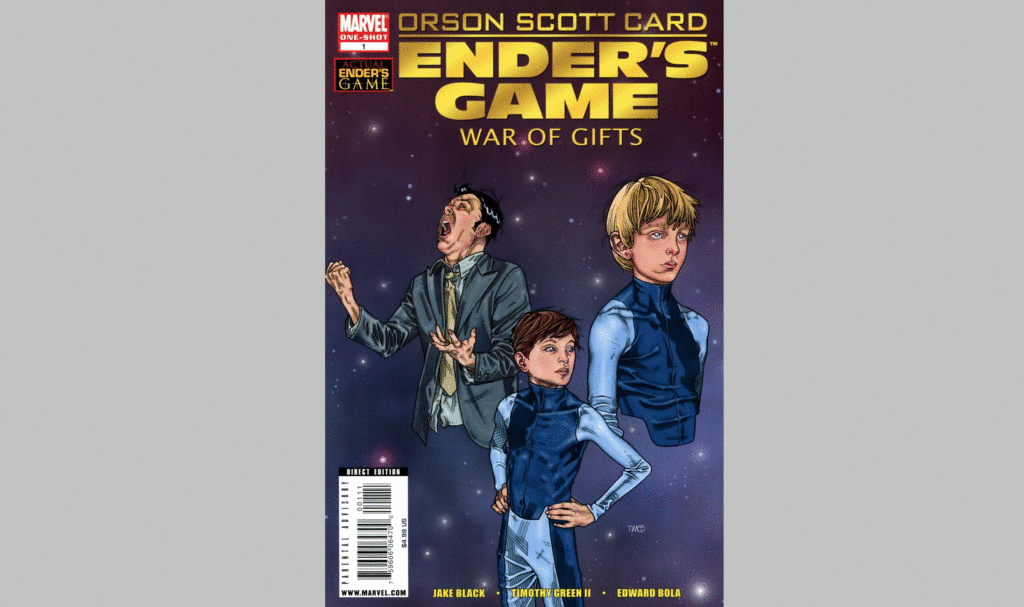
“A War of Gifts” is a short novella set during Ender’s time in the Battle School. It focuses on Zeck Morgan, a highly intelligent boy whose religious father has sent him to Battle School despite his pacifistic beliefs. The novella explores themes of tolerance and understanding as Zeck grapples with the school’s secular environment and the celebration of Christmas.
Ender in Exile
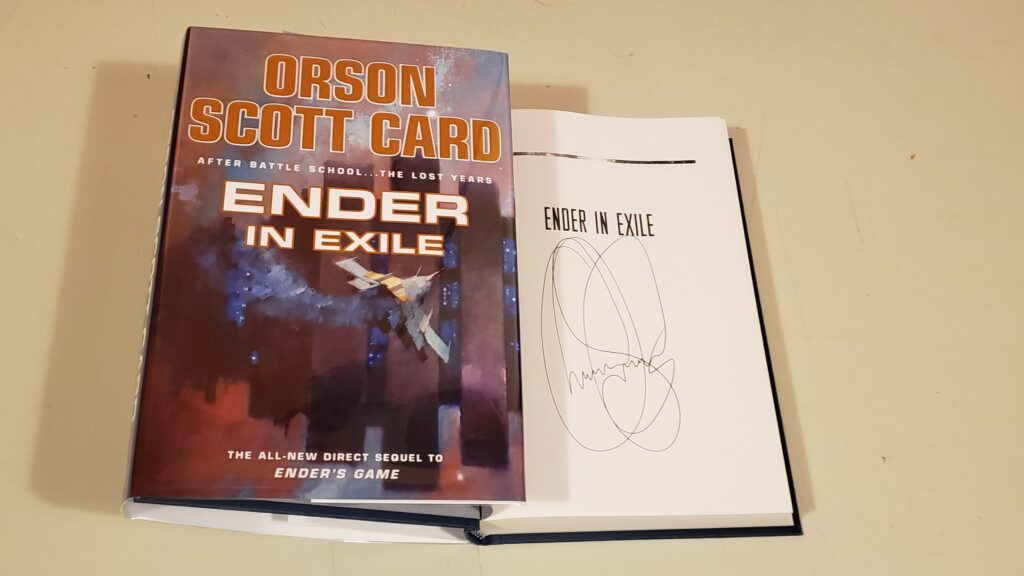
“Ender in Exile” fills in the gaps between “Ender’s Game” and “Speaker for the Dead.” After the Formic War, Ender becomes the governor of one of Earth’s colonies. This book delves into Ender’s travels and his struggle with his past, particularly the guilt over the Formic genocide. The novel also provides closure to some plotlines from the Shadow Saga.
Shadows in Flight
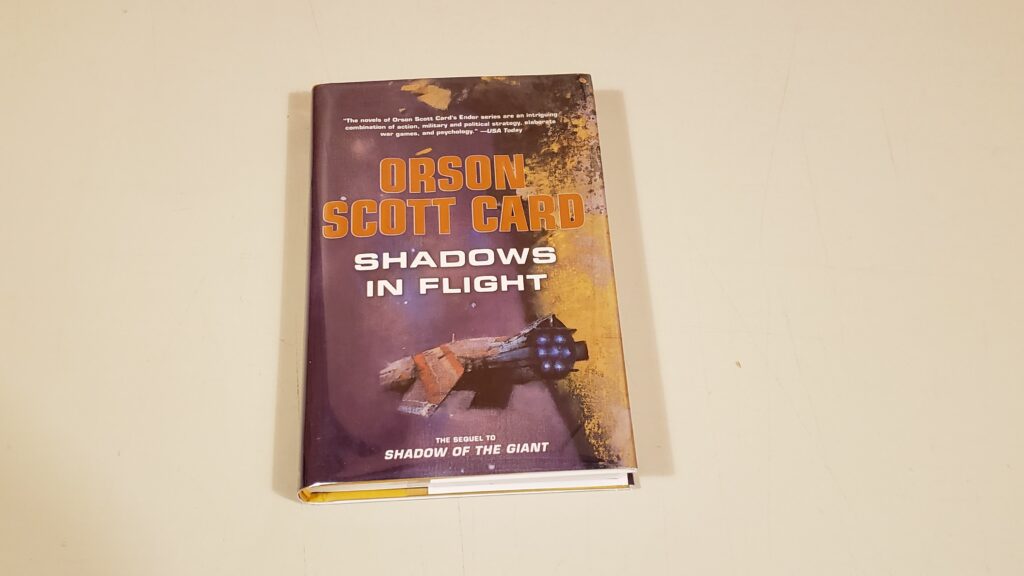
“Shadows in Flight” follows Bean’s children, who share their father’s hyper-intelligence and his unfortunate genetic condition. Having left Earth to buy time, they encounter a Formic ship and make discoveries that could save both their lives and their father’s.
Earth Unaware
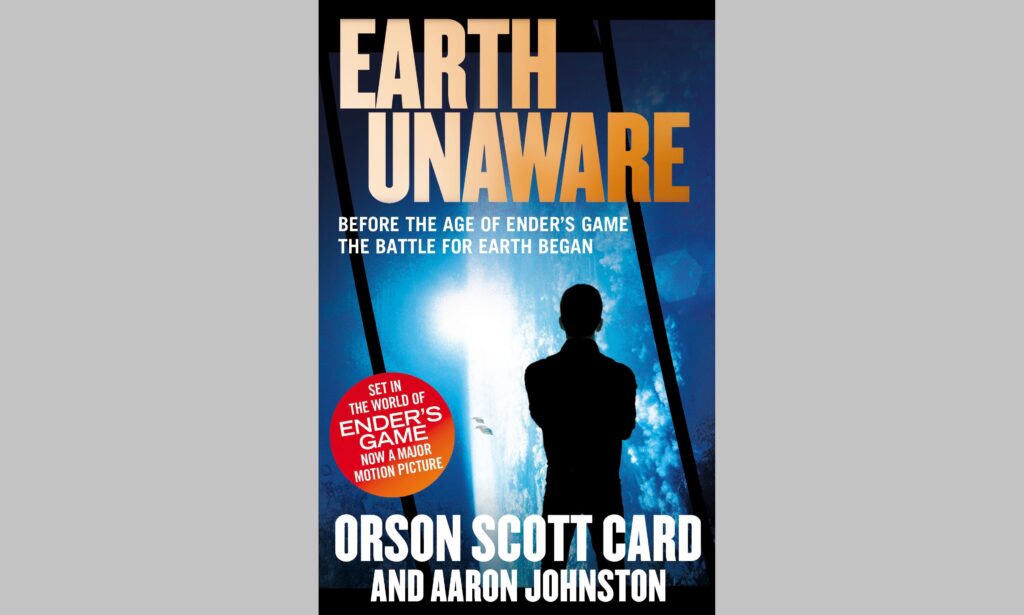
“Earth Unaware” is the first book in the First Formic War trilogy, a prequel to “Ender’s Game.” This novel takes us back to before the Formic War, focusing on the first contact between humans and Formics and the events leading up to the war. The book features new characters, such as Mazer Rackham, a soldier who would later become a hero in the Formic War.
In each of these books, we gain new perspectives on familiar characters, explore untold stories, and delve deeper into the rich and intricate universe that Orson Scott Card has built in the Ender’s Game series.
Earth Afire
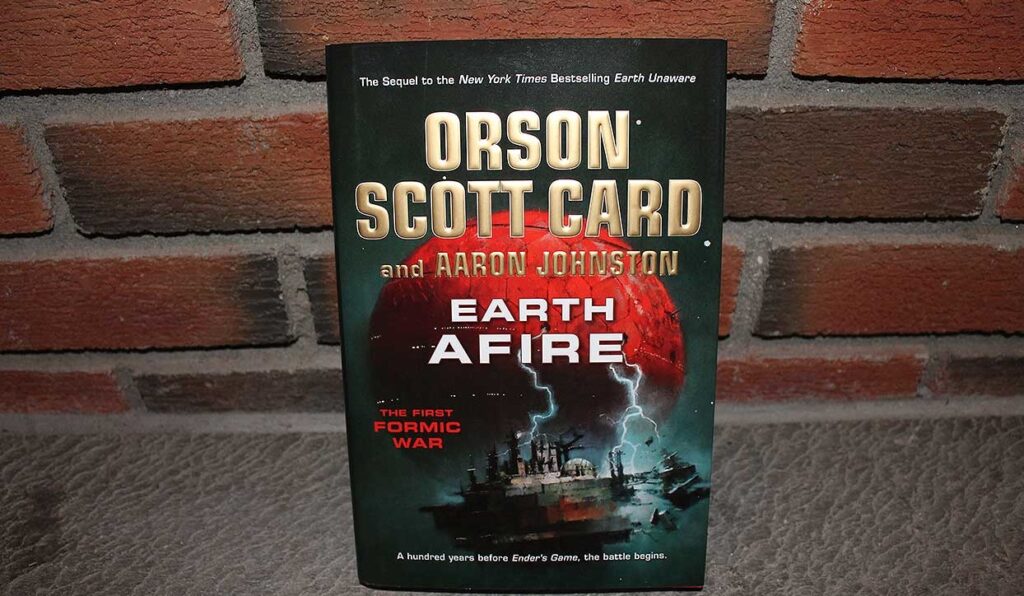
“Earth Afire” is the second book in the First Formic War trilogy. The Formics have reached near-Earth space, and humanity must scramble to defend itself. This novel introduces more characters, including Bingwen, a brilliant rural Chinese boy.
Various individuals and groups, including Mazer Rackham, must fight against the Formics in chaotic and desperate skirmishes. It’s a story of bravery, sacrifice, and humanity’s struggle to unite in the face of a common enemy.
Earth Awakens
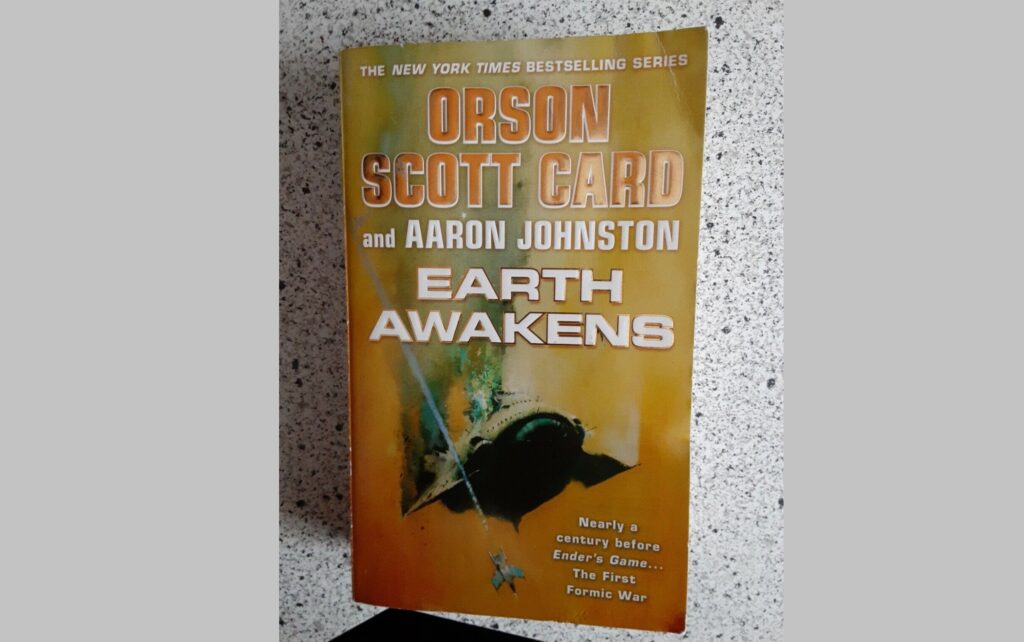
“Earth Awakens” is the final installment of the First Formic War trilogy. After the devastating initial assaults by the Formics, humanity begins to rally and organize a counter-attack. Mazer Rackham, Bingwen, and other characters continue their roles in the unfolding war. The book captures the climax of the First Formic War, paving the way for the events in “Ender’s Game.”
Children of the Fleet
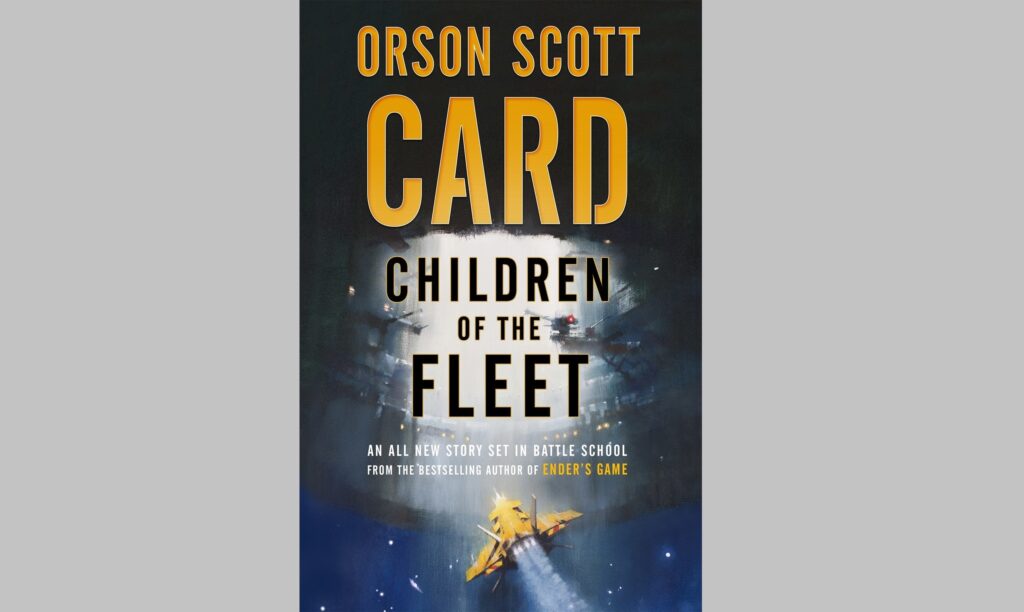
“Children of the Fleet” spins off from the main Ender’s series, following Dabeet Ochoa, a highly intelligent boy as he trains at Fleet School, the institution that replaced Battle School after the Formic War.
Dabeet and his classmates must navigate their ambitions, interstellar politics, and a new alien threat. It examines the pressures and strategies of leadership, similar to “Ender’s Game,” but in a context without the imminent threat of war.
The Hive
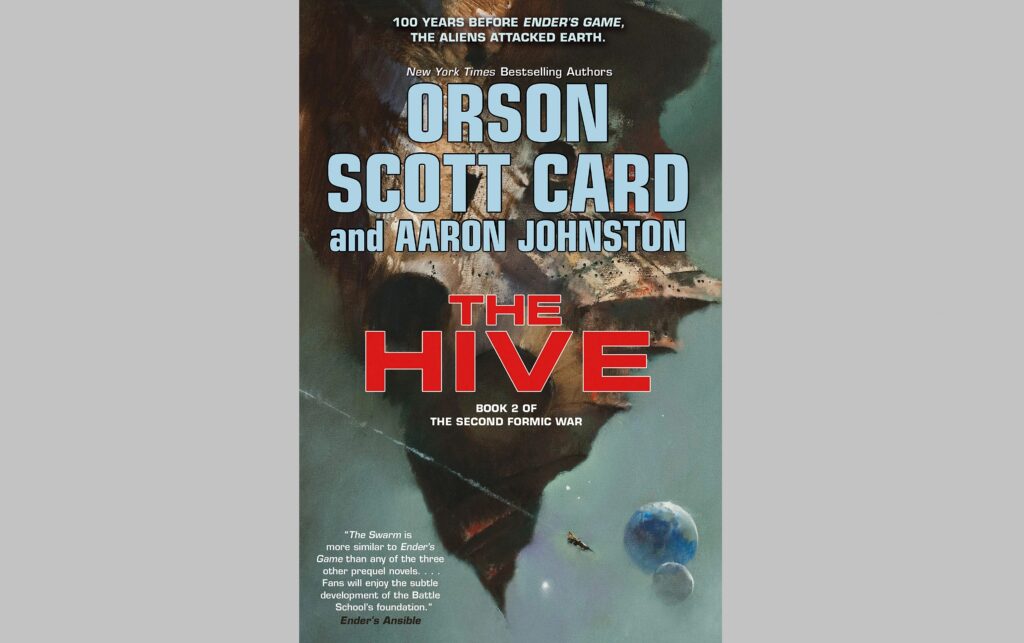
“The Hive” is the second book in the Second Formic War trilogy. It continues the story from the first trilogy, focusing on humanity’s ongoing struggle against the Formics. This series delves into Mazer Rackham’s history and more of the background leading up to the events of “Ender’s Game.”
The Queens
“The Queens” is the third book in the Second Formic War trilogy. The war continues, and humanity tries to uncover the secret of the Formic’s hive structure and the queens. It’s a key part of the prequel trilogy, offering more background information and context for the original “Ender’s Game” novel.
In summary, these books in the Ender’s Game series explore a wide range of scenarios, timelines, and characters, fleshing out the universe that Orson Scott Card created. They add depth to the original stories and enrich the reader’s understanding of this complex and engaging world.
In what order should I read Ender’s Game?
The order in which you should read the Ender’s Game series can depend on your preference. Here are two common orders:
- Publication Order: If you want to read the books in the order they were published, you’d start with “Ender’s Game,” then “Speaker for the Dead,” “Xenocide,” “Children of the Mind,” “Ender’s Shadow,” and so on.
- Chronological Order: If you want to follow the series’ events chronologically, you’d start with the First Formic War trilogy (“Earth Unaware,” “Earth Afire,” “Earth Awakens”), then the Second Formic War trilogy, then “Ender’s Game,” followed by “Ender’s Shadow,” and then progress through the parallel series.
How many books are in Ender’s series?
The Ender’s Game series is made up of 19 books, including two prequel trilogies, the Ender’s Saga, the Shadow Saga, a few standalone books, and several short stories.
Should I read “Speaker for the Dead” or “Ender in Exile” first?
If you’re following the publication order, you would read “Speaker for the Dead” first. “Ender in Exile” was published later but fits into the timeline immediately after “Ender’s Game,” before “Speaker for the Dead.” The book fills in gaps and provides closure for certain storylines, but it also contains spoilers for the Shadow series.
Was Ender’s Game a book first?
Yes, “Ender’s Game” was originally a novel written by Orson Scott Card and first published in 1985. It was based on a short story of the same name that Card wrote in 1977. The novel has since been adapted into a film, comic books, and a video game.
What year was Ender’s Game banned?
“Ender’s Game” has faced challenges and attempted bans from various schools and libraries over the years due to its violent themes and language. The exact years can vary based on location. For example, it was removed from a middle school reading program in Harford County, Maryland, in 2012.
Is Ender’s Game a trilogy?
“Ender’s Game” is part of the Ender’s Saga, which initially consisted of four books: “Ender’s Game,” “Speaker for the Dead,” “Xenocide,” and “Children of the Mind.” So it’s not a trilogy, but a quartet. However, the wider Ender’s Game series includes many more books, including prequels, parallel novels, and sequels, making it a much larger series.
Who is the main protagonist in the Ender’s Game series and what is his significance?
Ender Wiggin is the main protagonist of the Ender’s Game series. He’s a child prodigy selected by the International Fleet to train at Battle School and prepare for humanity’s war against an alien species called the Formics. His strategic brilliance and unique perspective ultimately allow him to successfully end the Formic War but at a great personal cost.
What is the central conflict in “Ender’s Game?
The central conflict in “Ender’s Game” is between humanity and the Formics, an alien species perceived as a threat. Internally, Ender grapples with the moral and psychological implications of his actions in the war. There is also a significant exploration of power dynamics among the children at Battle School.
How does the parallel novel “Ender’s Shadow” add to the original narrative?
“Ender’s Shadow,” tells the same events as “Ender’s Game” but from the perspective of Bean, another highly intelligent child at Battle School. This different perspective enhances the original narrative by providing new insights into the story, the strategic decisions made, and the characters themselves.
What is the primary theme in the Speaker for the Dead?
The primary theme in “Speaker for the Dead” is understanding and empathy. In this novel, Ender serves as a ‘Speaker for the Dead’, working to understand and tell the true stories of the deceased, promoting empathy and deeper understanding among the living.
What is the setting of the Shadow series, and how does it differ from the original Ender’s Game?
The Shadow series is set on Earth after the Formic War, focusing on Ender’s contemporaries from Battle School, especially Bean. Unlike “Ender’s Game,” which is primarily set in space, the Shadow series delves into geopolitical conflicts on Earth and the personal journeys of the characters.
What role does Mazer Rackham play in the First Formic War trilogy?
Mazer Rackham is a significant character in the First Formic War trilogy. As a skilled soldier, he plays a crucial role in humanity’s defense against the initial Formic invasion. His actions and leadership contribute significantly to the understanding of the Formic threat, setting the stage for the events of “Ender’s Game.”
How does the novel “Children of the Fleet” expand Ender’s universe?
“Children of the Fleet” expands Ender’s universe by exploring the events and challenges faced at Fleet School, the institution that replaced Battle School after the Formic War. This standalone novel introduces a new protagonist, Dabeet Ochoa, and offers insights into the broader universe, post-Formic War politics, and humanity’s efforts to colonize space.
What is the general timeline of events in the Ender’s Game series?
The Ender’s Game series spans several centuries. It starts with the prequel trilogies, the First and Second Formic War trilogies, which cover the first encounters between humans and the Formic aliens and the ensuing wars. Then comes “Ender’s Game,” where a young boy, Ender Wiggin, is trained to combat the Formics.
The events in the Shadow Saga take place concurrently and shortly after “Ender’s Game,” focusing on Earth. The Ender Quartet (starting with “Speaker for the Dead”) takes place thousands of years after “Ender’s Game” due to relativistic space travel.
What role does Bean play in the series?
Bean is a major character in the Ender’s Game series, serving as a supporting character in “Ender’s Game” and the main character in the Shadow Saga. Bean’s unique perspective on the events of “Ender’s Game” is explored in “Ender’s Shadow,” and the Shadow Saga follows his life on Earth after the Formic War.
What themes does the series explore?
The Ender’s Game series explores themes of morality, leadership, empathy, and the consequences of war. It also delves into questions of identity, sacrifice, geopolitics, and humanity’s potential for both cruelty and kindness.
What is unique about the Formic War trilogies?
The Formic War trilogies are prequels to “Ender’s Game” that provide context and background for the Formic War. They give readers a look at the events leading up to the war, its main players like Mazer Rackham, and the circumstances leading to Ender Wiggin’s recruitment into Battle School.
How does the Ender’s Game series develop its characters?
The Ender’s Game series is notable for its complex character development. Characters like Ender, Bean, and Petra are deeply explored, with their personal growth, relationships, struggles, and triumphs central to the narrative. The series often explores characters’ inner thoughts and feelings, lending insight into their motivations and decisions.
What is the significance of the Shadow Saga?
The Shadow Saga offers a parallel narrative to the original “Ender’s Game,” providing additional depth to the characters and events in the original story. It continues the narrative after the Formic War, focusing on the geopolitical conflicts on Earth and the lives of Ender’s contemporaries from Battle School.
What influence has the Ender’s Game series had on the science fiction genre?
The Ender’s Game series has had a significant influence on the science fiction genre. The original book, “Ender’s Game,” is considered a classic of the genre, renowned for its exploration of complex themes, its nuanced characters, and its innovative depiction of future warfare and society.
The series’ blend of action, philosophy, and character development set a high standard for subsequent works in the genre.
What distinguishes the Ender’s Saga from the other books in the Ender’s Game series?
The Ender’s Saga, comprising “Ender’s Game,” “Speaker for the Dead,” “Xenocide,” and “Children of the Mind,” forms the core narrative arc of the series. It mainly focuses on Ender Wiggin’s life from childhood through his experiences in Battle School and his journey as a Speaker for the Dead.
This saga is distinguished by its exploration of profound themes such as morality, leadership, empathy, and the nature of humanity.
How does the Shadow Saga enrich the narrative of the Ender’s Game series?
The Shadow Saga, starting with “Ender’s Shadow,” follows the life of Bean, a secondary character in “Ender’s Game.” It enriches the narrative by providing an alternative perspective on the events at Battle School, and it continues the story on Earth after the Formic War, delving into geopolitical conflicts and the personal journeys of Ender’s contemporaries.
How do the prequel trilogies, the First Formic War and Second Formic War, set the stage for the events in “Ender’s Game”?
The prequel trilogies explore the events leading up to the Formic War and the global response to the alien invasion. They introduce key characters like Mazer Rackham and provide a deeper understanding of the geopolitical and social landscape that led to the formation of the International Fleet and Battle School, the main setting of “Ender’s Game.”
How does “Children of the Fleet” add to the overall series?
“Children of the Fleet” introduces a new protagonist, Dabeet Ochoa, and takes place at Fleet School, the successor to Battle School. It offers a fresh perspective on the post-Formic War universe and the challenges faced by humanity as they venture into space and handle the fallout from the war.
What significant themes and messages does the series explore through its varied narratives and characters?
The series delves into numerous themes such as the moral implications of war, leadership, empathy, sacrifice, and identity. Through its characters and narratives, it explores humanity’s potential for both kindness and cruelty, the impact of power and politics, and the struggle for understanding and peace in the face of conflict.
How does the series portray its protagonist, Ender Wiggin, across different stages of his life?
The series portrays Ender as a compassionate and highly intelligent individual thrust into extraordinary circumstances. From his childhood as a military prodigy in “Ender’s Game” to his journey of atonement as a Speaker for the Dead in subsequent books, Ender’s character development is a central element of the series.
How has the Ender’s Game series influenced the science fiction genre and its readers?
The Ender’s Game series has had a significant impact on the science fiction genre. It’s renowned for its complex characters, innovative ideas, and thought-provoking themes. It has inspired readers to think deeply about moral and philosophical questions.
It has influenced other works in the genre with its blend of action, character development, and exploration of future societies.
Conclusion
The Ender’s Game series, penned masterfully by Orson Scott Card, provides readers with an expansive universe rich in detail, depth, and complexity.
From the seminal “Ender’s Game” to the expansive prequel trilogies and parallel narratives, the series skillfully intertwines thrilling science fiction with profound philosophical exploration.
Regardless of the order you choose to read, the Ender’s Game series offers an unforgettable journey that resonates far beyond its pages, leaving readers with much to ponder about humanity, morality, and our place in the universe.
